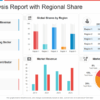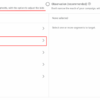Seven deadly sins of social media marketing plague many brands online. These pitfalls, ranging from a lack of authenticity to ignoring audience engagement, can severely damage a brand’s online presence and hinder growth. Understanding these sins is crucial for building a strong and successful social media strategy.
This guide dives deep into each of these seven sins, exploring their definitions, negative impacts, and real-world examples. We’ll also uncover actionable strategies to avoid these pitfalls and cultivate a thriving online community.
Defining the Seven Deadly Sins

Social media marketing, while offering unprecedented opportunities for brand growth, can also be a minefield of pitfalls. Understanding the “Seven Deadly Sins” of social media marketing is crucial for navigating this landscape effectively. These sins, often subtle and seemingly harmless, can have devastating consequences for a brand’s online presence, damaging its reputation and ultimately impacting its bottom line.
A keen awareness of these errors is essential for building a strong and sustainable online presence.The Seven Deadly Sins of social media marketing represent common mistakes that hinder brand growth. They encompass a range of actions, from neglecting audience engagement to perpetuating misleading content. Identifying these sins allows businesses to proactively avoid them, fostering a healthier and more effective online strategy.
Defining Each Sin
Social media platforms are dynamic environments, requiring constant adaptation and understanding. Each platform has its own nuances and audience expectations. These sins manifest differently across various platforms, from the casual nature of TikTok to the professional tone of LinkedIn. A brand’s approach must be tailored to the platform, and failing to do so can lead to a disconnect with the audience.
- Ignoring Audience Engagement: This sin manifests as a lack of response to comments, messages, and mentions. It demonstrates a lack of interest in audience feedback and can lead to a perception of disinterest or disregard. This can quickly damage brand loyalty and encourage negative reviews. Brands that fail to engage risk losing potential customers and fostering a sense of disconnect.
For instance, a brand might post a series of updates without responding to user questions, leading to a negative impression of their care for their audience.
- Creating Unengaging Content: This sin includes posting content that lacks visual appeal, fails to capture attention, or is irrelevant to the target audience. Such content is unlikely to generate interest, leading to decreased engagement and reach. A lack of visual appeal or failure to cater to the platform’s specific tone can result in significant missed opportunities. For example, a company might post promotional material that is visually bland and lacks compelling copy, leading to low engagement rates and reduced brand visibility.
- Misrepresenting Products or Services: This involves exaggerating or fabricating claims about the quality, benefits, or features of a product or service. This dishonesty can damage brand credibility and erode trust, resulting in negative publicity and boycotts. Misleading customers can result in legal issues and serious reputational damage. For example, a company might make unsubstantiated claims about a product’s performance, leading to customer dissatisfaction and a loss of trust.
- Neglecting Brand Consistency: This sin involves inconsistent branding across social media platforms, leading to a diluted brand image and confusing messaging. Inconsistency can result in difficulty for consumers to recognize the brand. A lack of cohesive branding can lead to a loss of brand identity and recognition. For instance, a company might use different logos, colors, or fonts on different platforms, creating a disjointed brand image and confusing the target audience.
- Ignoring Negative Feedback: This sin involves failing to address negative comments, reviews, or complaints. Ignoring negative feedback can create a perception of indifference or incompetence. A lack of response to criticism can escalate negative sentiment. For example, a company might fail to respond to negative customer reviews on social media, potentially worsening the situation and harming its brand image.
- Ignoring Social Listening: This involves a failure to monitor social media conversations about the brand, competitors, or industry trends. This can lead to missed opportunities to engage with potential customers or identify potential issues. A brand that does not listen to what is being said about them risks losing valuable insights. For instance, a company might miss a crucial discussion about a competitor’s new product, hindering its ability to respond effectively.
- Failing to Adapt to Platform Trends: This involves not keeping up with the latest trends, features, and best practices on different social media platforms. This can lead to outdated content, low engagement, and a missed opportunity to connect with the target audience. Failure to adapt can result in the brand appearing irrelevant. For instance, a company might continue to use outdated posting styles or neglect the emerging video trends on a platform like TikTok, missing opportunities for engagement.
Table Comparing the Seven Sins
| Sin | Definition | Impact | Example |
|---|---|---|---|
| Ignoring Audience Engagement | Failing to respond to comments, messages, and mentions. | Damages brand loyalty, perception of disinterest. | A brand posts updates without responding to customer questions. |
| Creating Unengaging Content | Posting content that lacks visual appeal, interest, or relevance. | Decreased engagement, reach, and visibility. | A company posts visually bland promotional material. |
| Misrepresenting Products/Services | Exaggerating or fabricating claims about products. | Damages credibility, trust, and can lead to negative publicity. | A company makes unsubstantiated claims about a product’s performance. |
| Neglecting Brand Consistency | Inconsistent branding across platforms. | Diluted brand image, confusing messaging. | A company uses different logos and colors on different platforms. |
| Ignoring Negative Feedback | Failing to address negative comments or complaints. | Perception of indifference or incompetence, can escalate negative sentiment. | A company fails to respond to negative customer reviews. |
| Ignoring Social Listening | Failing to monitor social media conversations. | Missed opportunities to engage with customers, identify potential issues, or react to trends. | A company misses a discussion about a competitor’s new product. |
| Failing to Adapt to Platform Trends | Not keeping up with latest platform trends and best practices. | Outdated content, low engagement, missed opportunities. | A company neglects video trends on TikTok. |
Lack of Authenticity: Seven Deadly Sins Of Social Media Marketing
Social media marketing thrives on connection and trust. Brands that fail to be authentic risk losing followers and damaging their reputation. Consumers are increasingly discerning, recognizing when a brand is trying too hard to portray a false image. A genuine connection fosters loyalty and drives positive word-of-mouth marketing.Authenticity isn’t a one-size-fits-all approach. It requires a deep understanding of your target audience and a consistent effort to portray your brand’s true values and personality.
This is especially crucial in today’s social media landscape, where curated perfection can easily mask underlying inauthenticity. Maintaining a genuine brand identity fosters a deeper, more meaningful relationship with your audience.
Importance of Authenticity in Social Media Marketing
Authenticity in social media marketing is essential for building trust and fostering genuine connections with your audience. A brand that consistently projects its true values and personality resonates more deeply with potential customers, creating a loyal following. This trust translates to increased engagement, higher conversion rates, and ultimately, greater brand success.
How Inauthenticity Damages a Brand’s Reputation
In today’s interconnected world, inauthenticity can quickly damage a brand’s reputation. Consumers are adept at identifying insincerity, and fabricated content often backfires. False representations erode trust, leading to decreased engagement, negative reviews, and a decline in brand credibility. This damage can be difficult and costly to repair.
Maintaining Authenticity on Various Social Media Platforms
Maintaining authenticity across diverse social media platforms requires adapting strategies to the unique characteristics of each platform. Consider your target audience and their expectations on each channel. Consistency in your brand voice and values is key. A brand should not feel forced to conform to a specific style for each platform; authenticity should be consistent across all channels.
Ugh, social media marketing can be tricky! Avoiding the seven deadly sins is key, but sometimes, the best way to learn is by example. Looking at successful campaigns, like my top 10 favorite beauty ads on Facebook, my top 10 favorite beauty ads on facebook , can highlight what works. Even if it’s just recognizing what not to do, these successful examples can help you steer clear of those common pitfalls and avoid the seven deadly sins in your own strategies.
| Platform | Strategy | Benefits | Example |
|---|---|---|---|
| Showcase behind-the-scenes content, highlight real employee stories, and use authentic visuals that reflect your brand’s aesthetic. | Builds trust and fosters a sense of community, showcasing transparency and relatability. | A coffee shop sharing a photo of their baristas brewing coffee, or a clothing company posting an image of their design team in action. | |
| Engage in conversations, respond to comments and questions authentically, and avoid overly promotional tweets. | Builds relationships with followers, fostering a sense of community, and showcasing your brand’s personality. | A tech company responding to customer queries with helpful and informative tweets, rather than just promoting their products. | |
| Create engaging content that connects with your audience on an emotional level, share user-generated content, and maintain a conversational tone. | Fosters meaningful connections, showcases a human side, and cultivates a strong sense of community. | A furniture store sharing customer testimonials or organizing interactive Q&A sessions with interior designers. | |
| Share industry insights, contribute to relevant conversations, and showcase your brand’s expertise in a genuine way. | Positions your brand as a thought leader, builds credibility, and connects with professionals within your industry. | A marketing agency sharing insightful articles on social media trends or hosting webinars on effective marketing strategies. |
Social Media Content Types Struggling with Authenticity
Generic, overly promotional content often struggles with authenticity. This includes content that lacks personality or doesn’t resonate with the audience. Influencer marketing, if not managed carefully, can also become a source of inauthenticity. Content that is solely focused on sales or self-promotion, without genuine engagement or value, is likely to appear inauthentic to the consumer. Authenticity is about genuine connection, not just a sale.
Ineffective Content Strategy
A strong content strategy is the bedrock of successful social media marketing. Without a well-defined plan, your efforts can feel aimless, leading to wasted time and resources. A lack of a clear strategy often translates to a lack of engagement, failing to resonate with your target audience and ultimately hindering growth. This is where a comprehensive content strategy comes into play.A poor content strategy often results in a disconnect between the content you’re creating and the needs of your audience.
This can manifest in various ways, from irrelevant posts to a lack of consistency, ultimately leading to decreased engagement and a diminished return on investment. A strategic approach, on the other hand, ensures your content aligns with your goals, resonates with your audience, and drives desired outcomes.
Importance of a Strong Content Strategy
A well-defined content strategy is crucial for maintaining a consistent brand voice and message across all social media platforms. It ensures your content aligns with your brand identity and resonates with your target audience, ultimately leading to higher engagement and conversions. It’s a roadmap for creating and distributing content that maximizes impact and efficiency.
Developing a Compelling Content Calendar
A content calendar is an essential tool for organizing and scheduling content. It acts as a visual representation of your social media strategy, helping you stay on track and maintain a consistent posting schedule. A robust content calendar ensures your content aligns with trends, promotes engagement, and ultimately contributes to your overall marketing goals.
- Planning Ahead: A well-structured content calendar allows you to plan posts in advance, ensuring a consistent flow of relevant and engaging content. This proactive approach helps you stay ahead of the curve and prevents last-minute scrambling.
- Content Variety: A diverse range of content types, including images, videos, and text posts, is crucial for maintaining audience interest. A content calendar facilitates this variety by enabling you to schedule a mix of content formats.
- Audience Engagement: Include interactive elements, such as polls, quizzes, and Q&A sessions, in your content calendar to foster audience participation and create a more dynamic experience.
Understanding Your Target Audience
Knowing your target audience is paramount for creating content that resonates with them. Understanding their interests, needs, and pain points allows you to craft compelling messages that address their concerns and ultimately drive engagement. Deeply understanding your target audience is the key to creating content that is relevant and valuable to them.
- Demographics: Consider factors like age, gender, location, and profession to understand your audience’s characteristics. This information informs your content choices, enabling you to connect with them on a more personal level.
- Interests and Values: Research your audience’s hobbies, passions, and values. This helps you create content that aligns with their interests, fostering a stronger connection.
- Pain Points and Needs: Identify the challenges and problems your target audience faces. Creating content that addresses these pain points positions your brand as a solution provider, increasing engagement and trust.
Effective Content Strategies Across Platforms
Different social media platforms cater to different content formats and audience preferences. Tailoring your content strategy to each platform is vital for maximizing its effectiveness. A successful strategy adapts to each platform’s nuances, optimizing engagement.
- Instagram: Visual-centric content, such as high-quality images and engaging videos, is key on Instagram. A content strategy that leverages eye-catching visuals and captivating stories is crucial for success.
- Twitter: Short, concise, and informative content is crucial on Twitter. A content strategy that prioritizes brevity and timely updates is essential for maintaining engagement.
- Facebook: A combination of diverse content formats, including images, videos, and text posts, can effectively engage audiences on Facebook. A content strategy that balances various content types is ideal for a diverse audience.
Content Strategy Components
| Component | Description | Importance | Example |
|---|---|---|---|
| Target Audience | Detailed profile of the ideal customer | Crucial for tailoring content to resonate | 25-35 year old women interested in sustainable fashion |
| Brand Voice & Tone | Unique personality and style of communication | Creates a consistent brand identity | Friendly, approachable, and informative |
| Content Pillars | Core themes and topics | Provides structure and direction | Sustainability, ethical fashion, eco-friendly living |
| Content Calendar | Scheduled posts and promotions | Maintains consistency and organization | Weekly posts highlighting new sustainable brands |
Ignoring Audience Engagement
Social media marketing thrives on interaction. Ignoring audience engagement is akin to ignoring a vital pulse in your business’s online heart. A lack of response to comments, questions, and messages creates a disconnect, diminishing the connection with your audience and potentially hindering brand growth. Ignoring the signals your audience sends through their interactions can severely impact your brand’s reputation and loyalty.Effective engagement is crucial for fostering brand loyalty and building a strong community.
Ever feel like your social media efforts are falling flat? Maybe you’re guilty of some of the seven deadly sins of social media marketing. Before you overhaul your entire strategy, though, consider these 7 key questions to ask before rebranding. For example, are your current social media platforms truly aligning with your brand’s vision? 7 questions to ask before rebranding can help you avoid some of the common pitfalls that plague social media marketers.
Ultimately, understanding your brand’s core message before rebranding is crucial to avoiding those same social media sins in the long run.
Ignoring audience input can lead to negative perceptions and a lack of trust. A proactive approach to engagement shows your audience that you value their opinions and concerns, building a sense of community and fostering brand loyalty. This active participation demonstrates respect for your audience and ultimately strengthens the brand-customer relationship.
Value of Active Audience Engagement
Active audience engagement is not just a nice-to-have; it’s a necessity in today’s social media landscape. Engaging with your audience demonstrates a genuine interest in their needs and perspectives. This responsiveness fosters trust and strengthens brand loyalty, leading to increased customer retention and advocacy. It also provides invaluable feedback, allowing you to understand your audience better and tailor your content to their interests.
Impact on Brand Loyalty
A lack of audience engagement directly affects brand loyalty. When customers feel unheard or ignored, their connection with your brand weakens. This can lead to decreased customer retention, negative word-of-mouth, and a decline in brand reputation. Conversely, actively engaging with your audience demonstrates that their feedback is valued, which fosters a sense of community and strengthens brand loyalty.
Strategies for Responding to Comments and Messages
Responding to comments and messages promptly and thoughtfully is paramount. A delayed or impersonal response can appear dismissive, creating a negative impression. Craft thoughtful and personalized responses, acknowledging the sentiment expressed and addressing concerns directly. For example, if a customer expresses dissatisfaction, address the issue directly and offer a solution. This demonstrates a willingness to resolve problems and rebuild trust.
Always strive for a professional and respectful tone in your responses.
Effective Audience Engagement Strategies, Seven deadly sins of social media marketing
Building a strong online community requires a multi-faceted approach. Engage with your audience by posing questions, hosting polls, running contests, and asking for feedback on new products or services. Encourage user-generated content by asking followers to share their experiences. Respond to comments and messages promptly and thoughtfully, showing that you value their input.
Fostering a Sense of Community Among Followers
Foster a sense of community among your followers by creating dedicated spaces for interaction. Host live Q&A sessions, use polls to gauge audience opinion, and encourage discussions about topics relevant to your brand. Organize themed contests or challenges to encourage interaction and participation. Actively participate in relevant conversations on social media platforms.
Engagement Strategies Table
| Strategy | Description | Platform Applicability | Example |
|---|---|---|---|
| Responding to Comments | Addressing comments promptly and thoughtfully, acknowledging the sentiment expressed. | All platforms | “Thank you for your feedback! We appreciate you bringing this to our attention.” |
| Hosting Live Q&A Sessions | Creating interactive sessions to answer audience questions and address concerns in real-time. | Facebook, Instagram, YouTube | Hosting a live session to discuss a new product launch. |
| Contests and Challenges | Encouraging user-generated content by hosting contests and challenges around a specific theme. | Instagram, TikTok, Facebook | “Share your experience using our new product and tag us for a chance to win!” |
| User-Generated Content Campaigns | Encouraging users to create content related to the brand and showcasing it. | Instagram, TikTok, Pinterest | Asking customers to share their favorite product photos or reviews. |
Neglecting Analytics and Data
Social media marketing is a dynamic field, constantly evolving with new platforms and trends. Staying ahead of the curve requires a deep understanding of audience behavior and campaign performance. Failing to leverage data analysis is like navigating a ship without a compass—you might drift in the wrong direction, wasting resources and missing opportunities for growth. This article delves into the crucial role of data in social media marketing and how neglecting it can significantly impact campaign effectiveness.Data analysis is fundamental to successful social media marketing.
It allows marketers to understand audience preferences, identify trends, and optimize campaigns for better results. Without analyzing data, you’re operating in the dark, guessing at what resonates with your audience and missing valuable insights that could lead to higher engagement and conversion rates. Data provides a clear roadmap, guiding you towards informed decisions and measurable improvements.
Importance of Data Analysis in Social Media Marketing
Understanding your audience and their behavior is paramount to successful social media marketing. Data analysis provides the insights needed to make informed decisions. By tracking key metrics, you can identify what content resonates best, which platforms drive the most engagement, and what times of day or days of the week generate the most activity. These insights are invaluable for optimizing your strategy and maximizing return on investment (ROI).
Methods for Tracking Key Performance Indicators (KPIs)
Tracking KPIs is crucial for evaluating campaign success and identifying areas for improvement. Various tools and platforms provide detailed analytics dashboards. For instance, platforms like Facebook Insights, Instagram Insights, Twitter Analytics, and others offer in-depth data on reach, engagement, website clicks, and conversions. Analyzing these metrics helps identify what’s working and what’s not, enabling data-driven adjustments to your strategy.
Examples of Using Analytics Data to Inform Future Strategies
Consider a campaign promoting a new product. If data shows high engagement with a particular type of visual content, like videos, you can allocate more resources to creating similar video content in the future. If a certain platform proves less effective than others in driving conversions, you might shift your focus towards platforms where your audience is more active.
Analyzing website traffic from social media campaigns can provide insights into how social media channels are driving sales and lead generation. The crucial aspect is to use data to refine your approach, leading to continuous improvement.
Illustrative Table of Key Performance Indicators
| KPI | Definition | Importance | Measurement Method |
|---|---|---|---|
| Reach | The number of unique users who saw your content. | Indicates the potential audience size for your message. | Social media platform analytics, third-party tracking tools. |
| Engagement Rate | The percentage of users who interacted with your content (likes, comments, shares). | Reflects the level of audience interest and connection with your brand. | Social media platform analytics, dedicated engagement tracking tools. |
| Website Clicks | The number of users who clicked on a link in your social media posts to visit your website. | Measures the effectiveness of your calls to action and the ability of social media to drive traffic. | Social media platform analytics, website analytics tools (e.g., Google Analytics). |
| Conversion Rate | The percentage of users who completed a desired action (e.g., making a purchase, signing up for a newsletter). | Quantifies the effectiveness of your campaigns in achieving your business goals. | Social media platform analytics, website analytics tools, CRM systems. |
Poor Brand Voice and Tone

A consistent brand voice is more than just a set of words; it’s the personality of your brand, echoing across all your social media interactions. It’s the key to establishing a recognizable identity and building a strong connection with your audience. This consistency fosters trust and reliability, differentiating your brand from competitors.Inconsistent messaging, on the other hand, creates confusion and distrust.
A shifting or unclear voice can lead to a fragmented brand image, making it difficult for your audience to understand your values and offerings. This inconsistency can ultimately harm your brand’s perception and hinder your ability to effectively engage with your target demographic.
Avoiding the seven deadly sins of social media marketing is crucial for success. One often overlooked pitfall is neglecting proper internationalization. This can be tackled by implementing hreflang tags SEO best practices hreflang tags seo best practices , ensuring your content reaches the right audience in the right language. Ultimately, these SEO best practices, like hreflang tags, are just one part of a well-rounded social media strategy to avoid falling prey to those seven deadly sins.
Creating a Unique Brand Voice
Establishing a unique brand voice requires careful consideration of your target audience and brand values. This involves defining the personality you want your brand to project, from playful and approachable to sophisticated and authoritative. Your voice should reflect your brand’s core values and resonate with your target audience.
Methods for Defining Brand Voice
Defining your brand voice requires a multi-faceted approach, including:
- Target Audience Research: Understanding your ideal customer is crucial. What are their interests, values, and preferred communication styles? This research informs the tone and language you should use to connect with them.
- Brand Values Identification: What principles guide your brand? Are you innovative, trustworthy, or customer-centric? Your brand values should be reflected in your voice and messaging.
- Style Guide Development: Create a style guide that Artikels your brand’s voice, tone, and preferred vocabulary. This document serves as a reference point for all social media posts, ensuring consistency across all platforms.
- Example Creation: Crafting examples of how your brand would communicate in different scenarios (e.g., responding to customer complaints, announcing a new product) helps visualize the desired voice in action.
Examples of Effective and Ineffective Brand Voices
Effective brand voices resonate with their audience, building trust and a sense of connection. Conversely, ineffective voices create confusion and distance, failing to effectively communicate the brand’s identity.
- Effective Brand Voice Example: Consider Patagonia. Their voice is authentic, environmentally conscious, and often emphasizes the durability and longevity of their products. This resonates with their environmentally-conscious customer base.
- Ineffective Brand Voice Example: Imagine a luxury fashion brand that uses overly casual language in its social media posts. This disconnect from their perceived brand image could confuse and alienate their target audience.
Brand Voice Examples Table
| Brand | Voice Description | Tone | Example Posts |
|---|---|---|---|
| Nike | Motivational, inspiring, performance-driven | Enthusiastic, energetic | “Unleash your potential. #JustDoIt” |
| Starbucks | Warm, inviting, friendly | Welcoming, approachable | “Start your day with a little something special. #Starbucks” |
| Target | Affordable, family-friendly, accessible | Playful, helpful | “Find your everyday essentials at Target. #TargetStyle” |
| Wendy’s | Witty, humorous, relatable | Playful, irreverent | “You can’t have just one. #Wendy’s” |
Failing to Adapt to Trends
Staying current with social media trends is crucial for any brand’s success. Social media is a dynamic landscape, constantly evolving with new platforms, formats, and user behaviors. Brands that fail to adapt risk falling behind the curve, losing engagement, and ultimately, relevance. This section explores the importance of staying ahead of the curve, the consequences of inaction, and successful adaptation strategies.The social media landscape is in constant flux.
New platforms emerge, existing ones evolve, and user preferences shift. Brands that fail to anticipate and adapt to these changes risk losing their audience to competitors who are more attuned to current trends. This is not simply about adopting new platforms, but also understanding how to leverage new content formats and strategies within existing ones.
Importance of Staying Current with Social Media Trends
Staying current with social media trends is vital for maintaining brand visibility and engagement. Trends often reflect evolving user interests and behaviors, providing opportunities to connect with audiences in more meaningful ways. Brands that successfully integrate emerging trends into their strategies can significantly enhance their reach and impact. Understanding what resonates with the target audience allows for a tailored approach, leading to greater engagement and conversion rates.
Consequences of Failing to Adapt to New Platforms or Formats
Failure to adapt to new platforms or formats can lead to a decline in brand visibility and engagement. As user habits shift, brands that remain stagnant risk losing relevance. Missed opportunities to connect with audiences through emerging platforms can result in a loss of potential customers and a reduced market share. Staying behind the curve can also negatively affect brand perception, making it seem outdated and unresponsive to user needs.
Examples of Brands that Successfully Leveraged Social Media Trends
Several brands have demonstrated the power of adapting to social media trends. For example, [Brand X] successfully utilized the rise of short-form video content on platforms like TikTok to engage a younger demographic and increase brand awareness. [Brand Y] effectively leveraged the interactive potential of Stories on Instagram to build community and foster customer loyalty. These brands understood the evolving trends and adjusted their strategies accordingly.
Trends with Potential Negative Implications for Brands
Certain trends, while popular, can pose risks to brands. For instance, the increasing prevalence of misinformation and fake news on social media necessitates careful brand management to avoid association with harmful content. Brands should exercise caution in navigating trends that could potentially damage their reputation or align them with negative perceptions. The ephemeral nature of some trends also necessitates a focus on consistent, high-quality content.
Researching and Analyzing Current Trends
Thorough research and analysis are critical to identifying relevant trends and evaluating their potential impact. Brands can utilize social listening tools to track conversations about their industry and competitors. Monitoring platform algorithms and community feedback provides invaluable insight into user preferences. By actively monitoring and analyzing these trends, brands can make informed decisions about their content strategy.
Trending Topics and Analysis
| Topic | Description | Relevance to Brands | Example Usage |
|---|---|---|---|
| Short-form video | Short videos (TikTok, Reels) are highly engaging. | Brands can create entertaining and informative short videos. | A fashion brand could create short videos showcasing new product lines. |
| Interactive content | Interactive polls, quizzes, and Q&As increase engagement. | Brands can use these to gather feedback and connect with their audience. | A travel company could create interactive polls asking users about their travel preferences. |
| Live streaming | Live video sessions allow real-time interaction. | Brands can host Q&As, product launches, or behind-the-scenes glimpses. | A tech company could live stream a product demo. |
| User-generated content | Content created by users is highly trusted. | Brands can encourage user-generated content with contests and incentives. | A food brand could host a contest for user-submitted recipes. |
Closure
In conclusion, navigating the complex world of social media requires a keen awareness of potential pitfalls. By understanding and avoiding the seven deadly sins—inauthenticity, ineffective content, disengaged audiences, neglected analytics, poor brand voice, and failure to adapt—brands can foster stronger connections, boost engagement, and ultimately achieve their marketing goals. This knowledge empowers you to build a sustainable and successful social media strategy.






